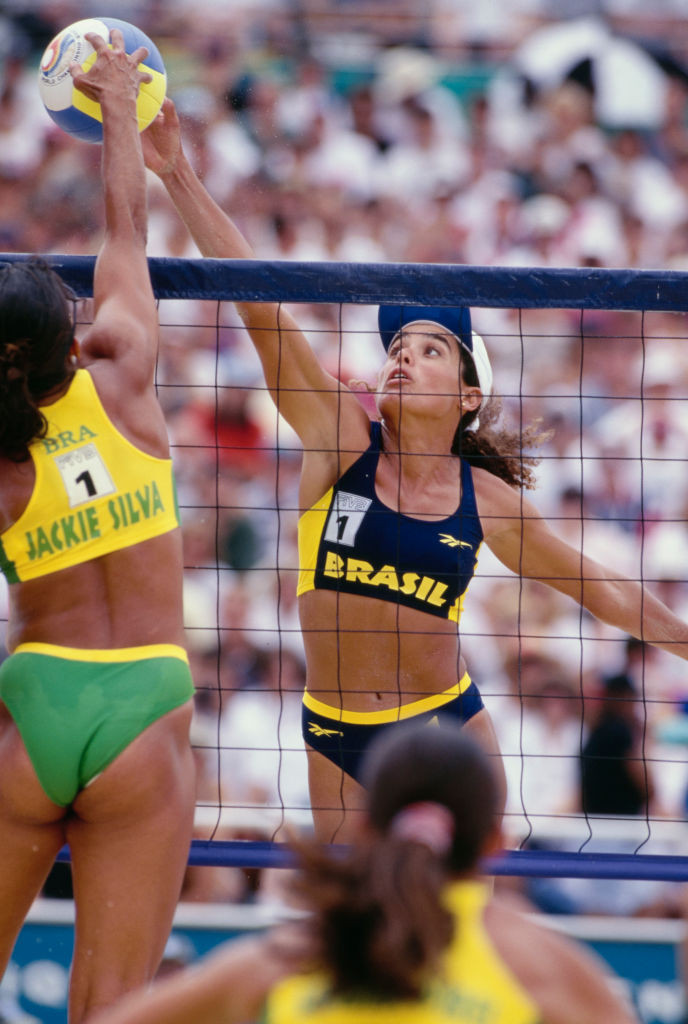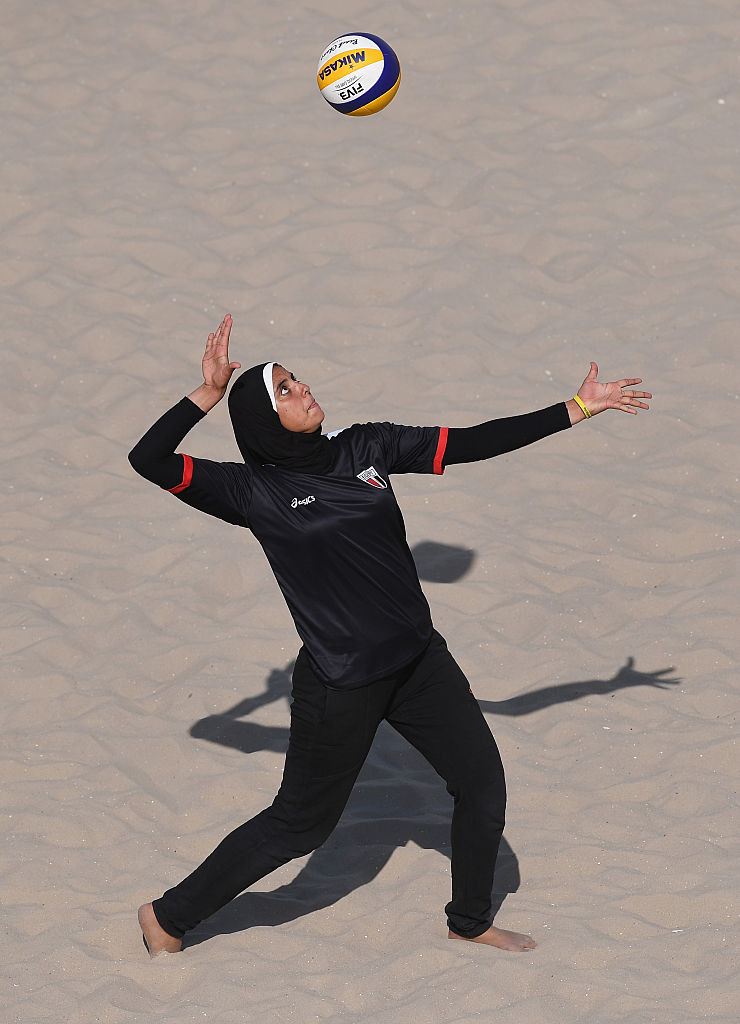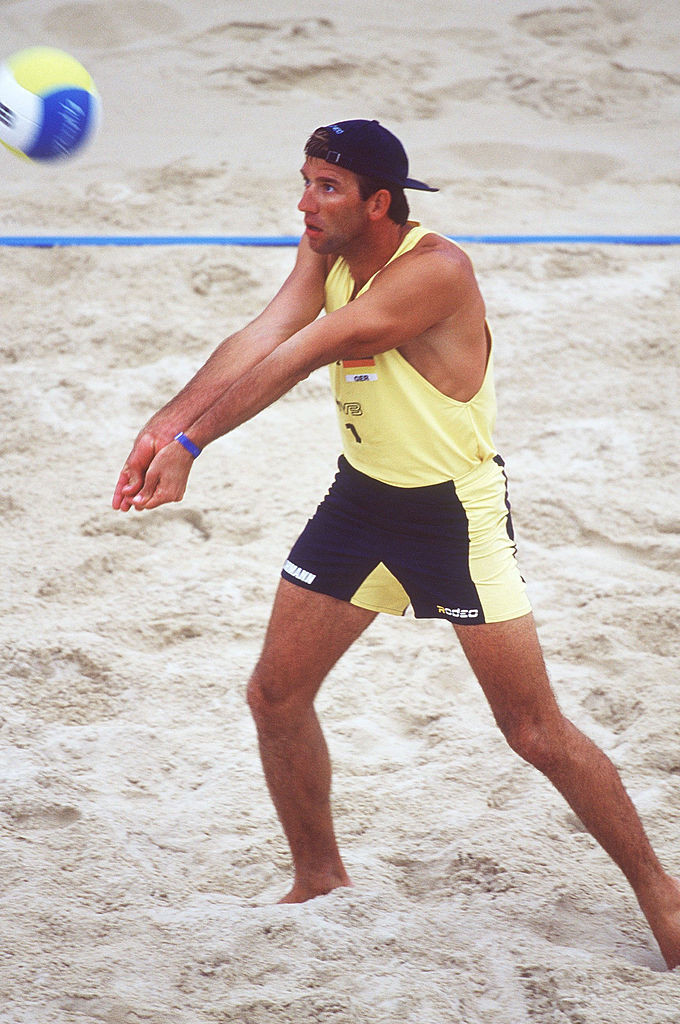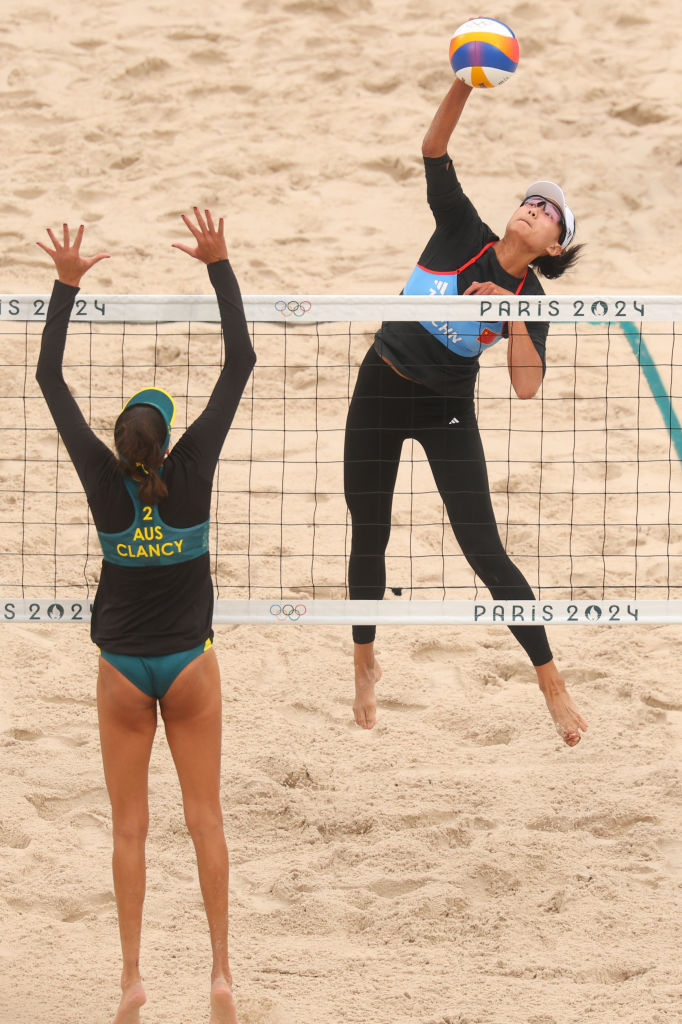Beach volleyball’s thrilling action and dynamic athleticism have captivated audiences since its official Olympic debut in 1996. Fast forward to today, it stands as one of the most beloved sports in the Games. Iconic Team USA athletes like Misty May-Treanor and Kerri Walsh Jennings have become synonymous with beach volleyball excellence, their medal-winning performances cementing the sport’s popularity. As the Paris 2024 Olympics approach, discussions around the game are heating up, and often, the spotlight extends beyond the competition itself to what athletes wear. While the sport’s history is intertwined with the bikini uniform, the narrative has evolved significantly, reflecting changes in inclusivity and athlete preferences.
A ‘Brief’ History of Beach Volleyball Uniforms
The origins of beach volleyball deeply influence its uniform choices. Born on the sun-kissed shores of Hawaii, Southern California, and Rio de Janeiro, the sport naturally adopted attire suited to warm beach environments. For many years, this translated to uniforms closely resembling swimwear, most notably bikini briefs.
Olympic medalist April Ross highlighted this connection in a 2021 interview with the Associated Press: “Beach volleyball was a sport that was developed in Hawaii and Southern California and on the beaches of Rio. You play, and it’s hot, and then you go and jump in the water.” This practical origin story explains the initial prevalence of bikini-style uniforms in the sport.
 Women's beach volleyball uniforms at the 1996 Atlanta Olympics showcasing bikini briefs, capturing the sporty and athletic nature of the event.
Women's beach volleyball uniforms at the 1996 Atlanta Olympics showcasing bikini briefs, capturing the sporty and athletic nature of the event.
Even unexpected weather conditions haven’t deterred the bikini’s practicality. Misty May-Treanor recounted an experience at the 2008 Games after a downpour, stating, “This is just another reason why we play in bathing suits.” The quick-drying nature and minimal fabric of bikinis offered a functional advantage in unpredictable beach weather. The image above captures the standard women’s beach volleyball uniforms at the 1996 Atlanta Olympics, emphasizing the historical context of bikini use in the sport.
Evolution of Uniform Options
The landscape of beach volleyball uniforms has broadened considerably since its early days. Today, female athletes are no longer confined to bikini briefs in competition. While two-piece outfits remain a viable option, the rules now accommodate a wider range of choices. One-piece swimsuits and short-sleeve tops are also permitted, offering athletes more coverage. Furthermore, recognizing diverse needs, full-length leggings and long-sleeve tops are allowed, particularly in colder climates or to accommodate religious beliefs. Even within shorts options, two different lengths are available, ensuring greater athlete comfort and choice.
This expansion of uniform options was a deliberate move ahead of the 2012 London Olympics. Driven by the Fédération Internationale de Volleyball (FIVB), the sport’s governing body, these changes aimed to encourage broader global participation. Prior to this adjustment, the bikini uniform was largely the standard, potentially posing a barrier to entry for athletes from various cultural backgrounds.
FIVB spokesman Richard Baker explained the rationale to the Associated Press in 2012: “Many of these countries have religious and cultural requirements, so the uniform needed to be more flexible.” This shift demonstrates a commitment to inclusivity and recognizing the diverse backgrounds of athletes worldwide.
Men’s beach volleyball uniforms, in contrast, have generally consisted of tank tops and bottoms similar to board shorts. In many non-Olympic beach volleyball settings, men often play shirtless. Similar to women’s options, long-sleeve tops and leggings are available for men when temperatures drop. Hats and sunglasses are permitted for all players, offering practical sun protection in the outdoor arena.
 Doaa Elghobashy of Egypt competing in beach volleyball at the 2016 Rio Olympics wearing a hijab and long sleeves, showcasing the inclusivity in modern Olympic uniform regulations.
Doaa Elghobashy of Egypt competing in beach volleyball at the 2016 Rio Olympics wearing a hijab and long sleeves, showcasing the inclusivity in modern Olympic uniform regulations.
The image above of Doaa Elghobashy competing at the 2016 Rio Olympics perfectly illustrates this evolution. Her choice of a hijab and long sleeves while playing exemplifies the impact of the updated uniform regulations, allowing athletes to compete while adhering to their personal or cultural preferences.
Uniform Guidelines and Regulations
Despite the expanded choices, the FIVB maintains specific guidelines to ensure fair play and uniform standards within Olympic beach volleyball. These regulations involve precise measurements for different uniform components. For example, bikini bottoms are restricted to a waistband no wider than 2.8 inches, and men’s shorts cannot exceed 3.9 inches above the knee.
A consistent requirement across all uniform styles is a “close fit.” Retired Olympic beach volleyball player Jennifer Kessy clarified the practical reasons behind this rule in a 2021 interview with Today: “Our suits need to fit just right so they don’t move places we don’t want them to move. A tailored fit is key.” This close-fitting design is crucial for preventing wardrobe malfunctions during dynamic movements and ensuring athletes can focus entirely on their performance.
Women’s briefs are further defined as needing to be “cut on an upward angle towards the top of the leg,” while one-piece swimsuits “must closely fit and the design must be with open back and upper chest.” Specific measurements also apply to pants options. Knee-length pants are “recommended to feature total length of [18.5 inches] and [1.2 inches] above the knee,” and full-length pants are expected to be approximately 35 inches long.
Team uniformity is also mandated, requiring teammates to wear matching uniforms. Logo and text placements on uniforms are also subject to sizing regulations. Failure to comply with the FIVB’s uniform rules can result in penalties and fines, and in serious cases, even disqualification from competition.
 Men's beach volleyball uniforms during the 2000 Sydney Olympics, featuring tank tops and board shorts, highlighting the standard attire for male athletes in the sport.
Men's beach volleyball uniforms during the 2000 Sydney Olympics, featuring tank tops and board shorts, highlighting the standard attire for male athletes in the sport.
Why Bikinis Remain a Popular Choice
Even with the broader uniform options available for the Olympic Beach Volleyball Uniforms 2024 and beyond, bikinis continue to be a preferred choice for many athletes. A key reason cited by players is practicality concerning sand intrusion. Two-piece uniforms prevent sand from becoming trapped inside the fabric, a significant distraction during gameplay.
Jennifer Kessy elaborated on this point, explaining why she personally avoids one-piece swimsuits: “It was restricting and limited my movements — imagine diving chest first and lodging more sand than you care to think down the front of your suit. You can’t keep it in there and it is not easy to get out. I found myself adjusting my one-piece all the time and while it was embarrassing, sure, it also took my focus off the match I was playing.” For many athletes, the bikini’s design simply offers greater comfort and less distraction from sand accumulation.
Modest Uniforms and Inclusivity
Despite the continued popularity of bikinis, the inclusion of more modest uniform options has been widely embraced, fostering greater inclusivity within the sport. Athletes like Doaa Elghobashy of Egypt exemplify this, choosing to compete in uniforms that align with their personal values.
Elghobashy, who has worn a hijab for ten years, emphasized in a 2016 interview with the AP: “It doesn’t keep me away from the things I love to do, and beach volleyball is one of them.” Her participation and choice of uniform highlight the positive impact of the FIVB’s updated regulations. The availability of diverse uniform options ensures that athletes from various cultural and religious backgrounds can participate in Olympic beach volleyball without compromising their beliefs or comfort.
 Alternative women's beach volleyball uniforms at the 2024 Paris Olympics, showing variety in styles like one-pieces and short sleeve tops, emphasizing the range of permitted options.
Alternative women's beach volleyball uniforms at the 2024 Paris Olympics, showing variety in styles like one-pieces and short sleeve tops, emphasizing the range of permitted options.
In conclusion, Olympic beach volleyball uniforms for 2024 represent a fascinating intersection of tradition, practicality, and evolving inclusivity. While the bikini holds historical significance and remains a functional choice for many, the expanded uniform regulations acknowledge the diverse needs and preferences of athletes from around the globe. As the Paris 2024 Olympics approach, the focus on athlete choice and comfort underscores the sport’s ongoing commitment to growth and global representation.
